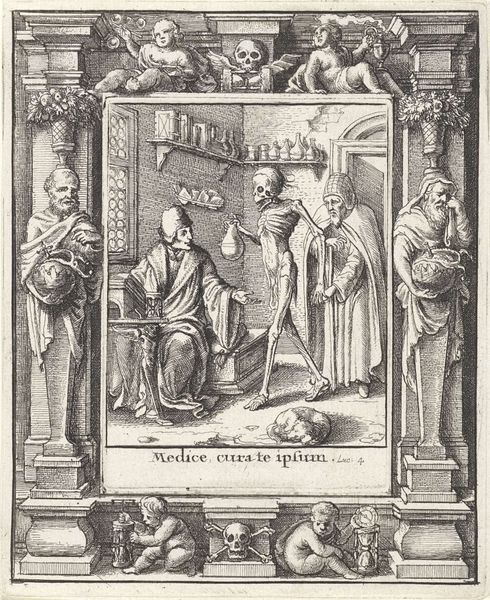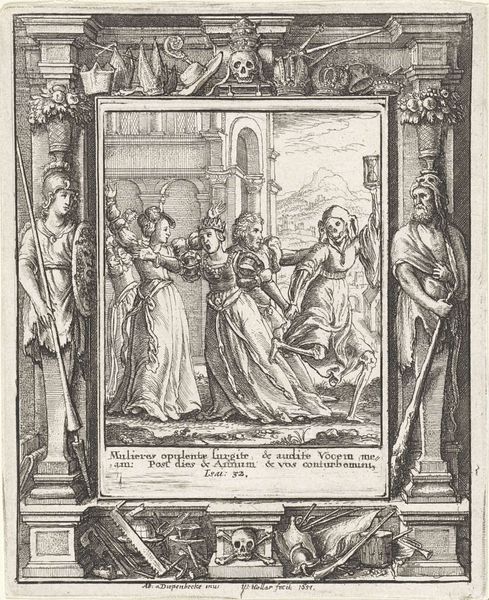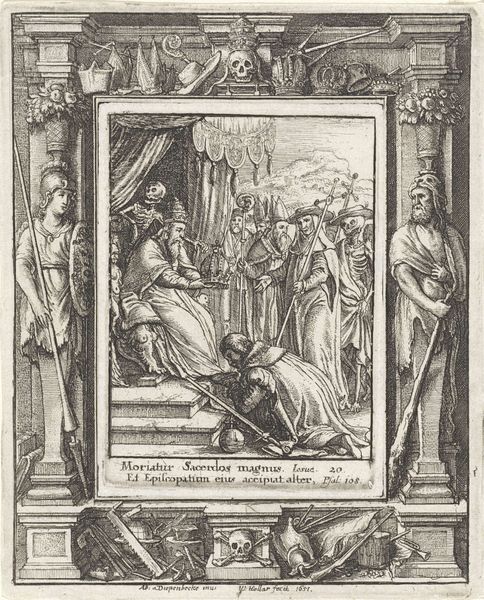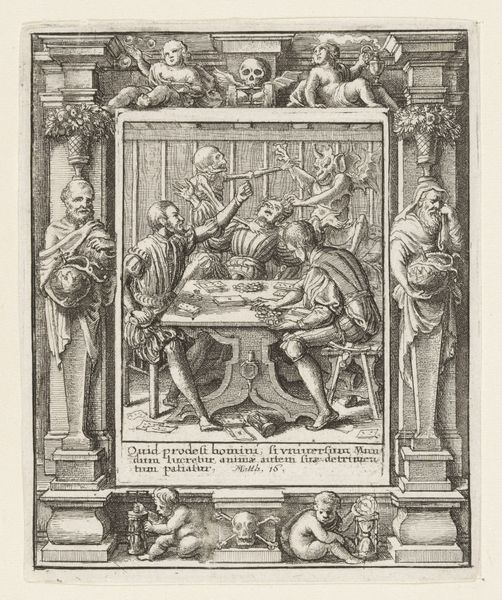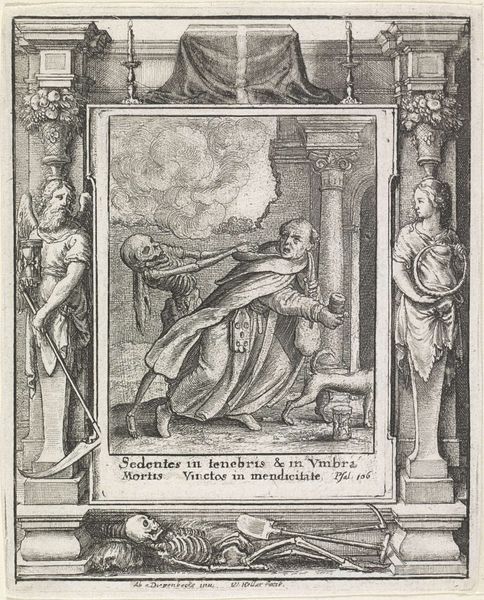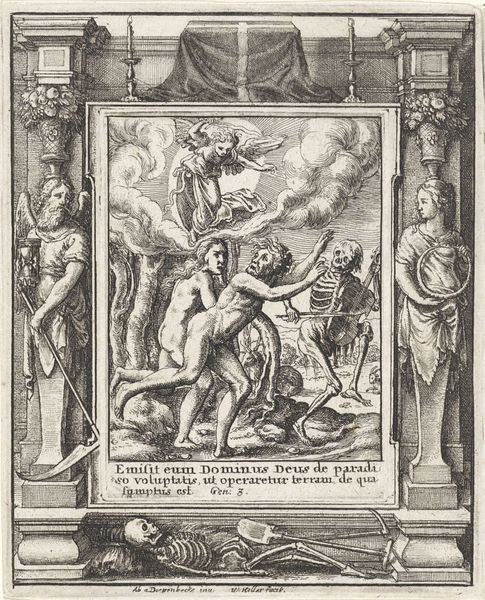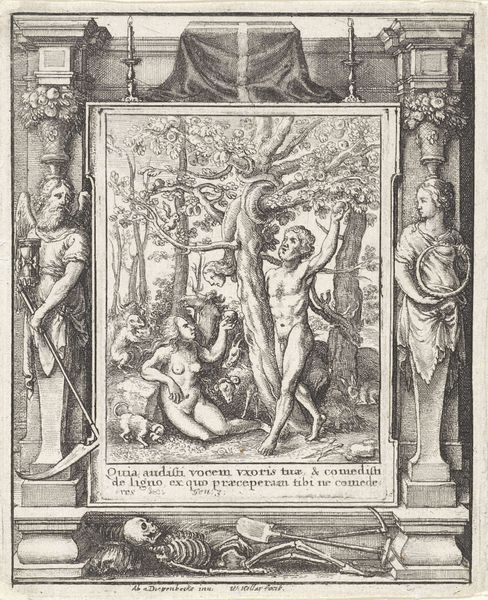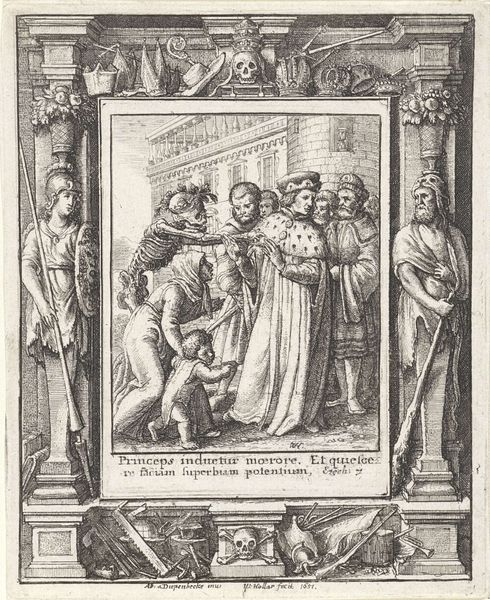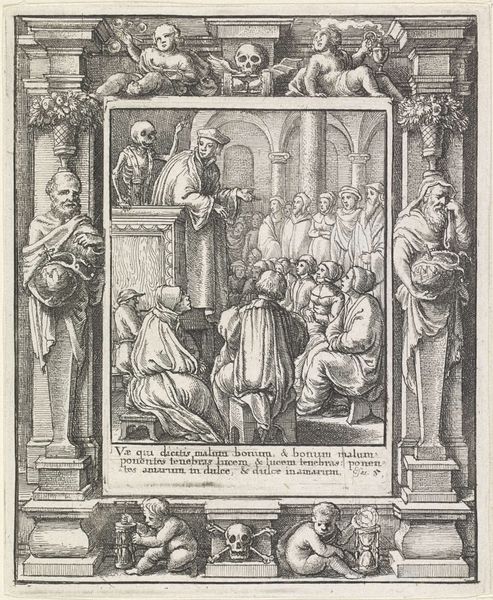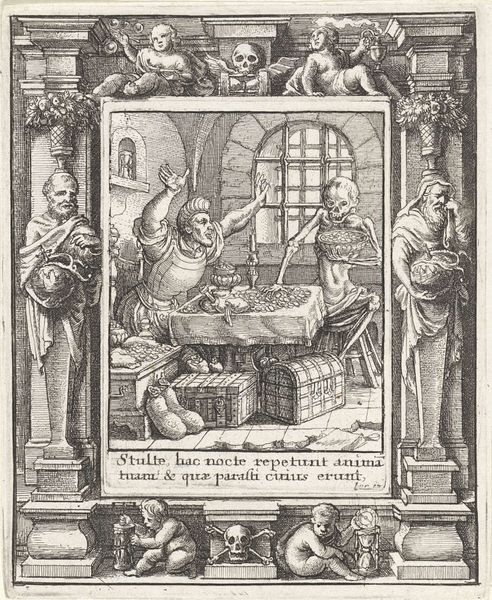
print, engraving
#
allegory
#
baroque
# print
#
figuration
#
vanitas
#
line
#
engraving
Dimensions: height 115 mm, width 95 mm, height 77 mm, width 55 mm
Copyright: Rijks Museum: Open Domain
Editor: This is "The Bride and Death," an engraving from 1651 by Wenceslaus Hollar, currently at the Rijksmuseum. It’s a very detailed print; seeing the bride, and then the skeleton lurking there, is quite unsettling. What’s your perspective on this piece? Curator: I see a pointed commentary on the labor involved in the rituals of marriage and social mobility in the 17th century. Hollar is using the relatively accessible medium of printmaking to circulate a “vanitas” image, reminding viewers of mortality. Consider the materials present: the clothing being exchanged, the jewelry on the table, the hourglass... All commodities, all things produced through labor. Editor: So, the presence of death is related to the transience of earthly possessions? Curator: Precisely. It’s a commentary on the fleeting nature of material wealth and social standing. Death acts as a leveler, undermining the importance placed on commodities that signify status. Editor: The figures to the sides, too, look like they’re holding urns or vases… how does that contribute? Curator: Those flanking figures are interesting; their placement further frames the central action. Ask yourself, where do these precious materials come from? What labor went into the arrangement in their urns? Editor: It's a fascinating approach to looking at the art, focusing on the labor and materiality behind the imagery. Curator: Absolutely. It is important to consider the socioeconomic circumstances and modes of artistic and societal production of Hollar’s time.
Comments
No comments
Be the first to comment and join the conversation on the ultimate creative platform.

